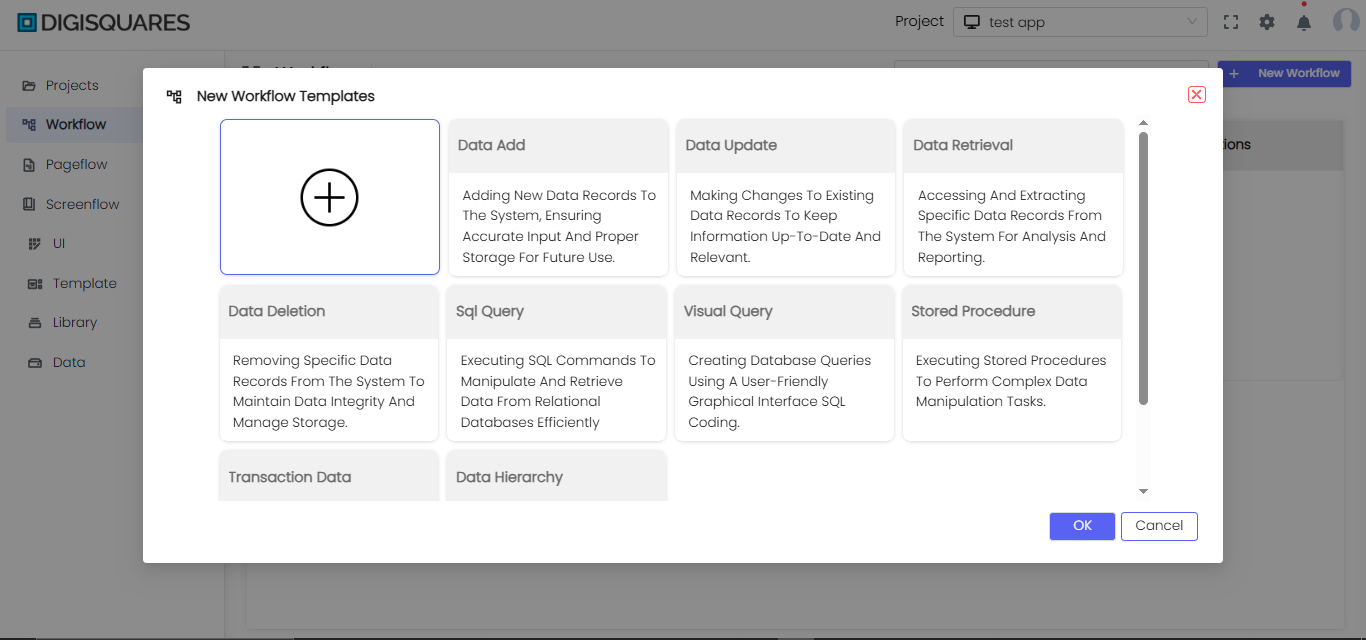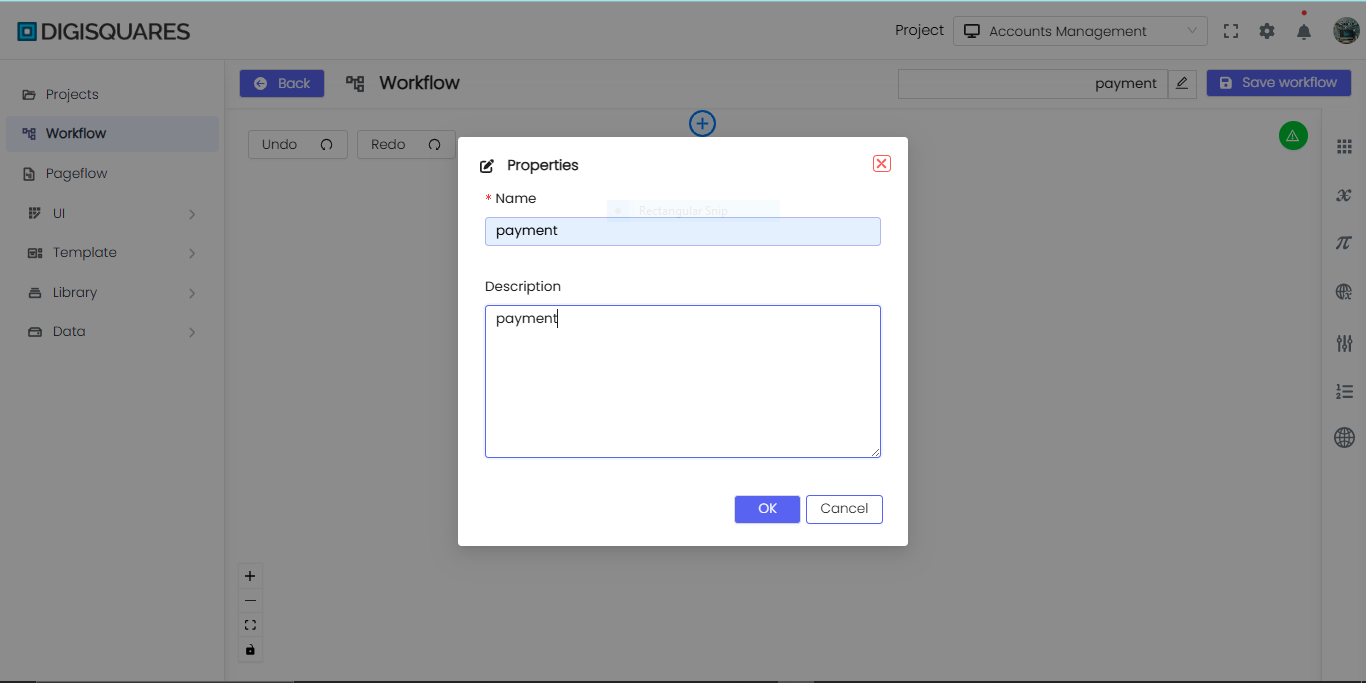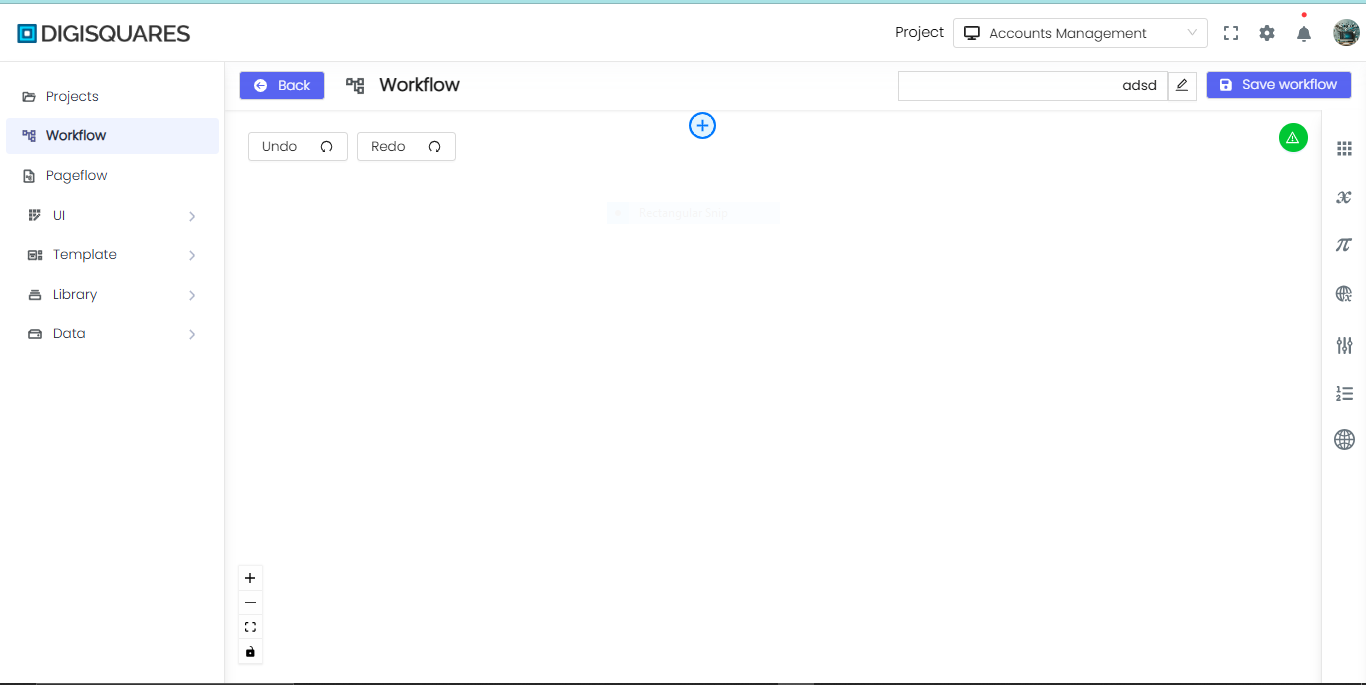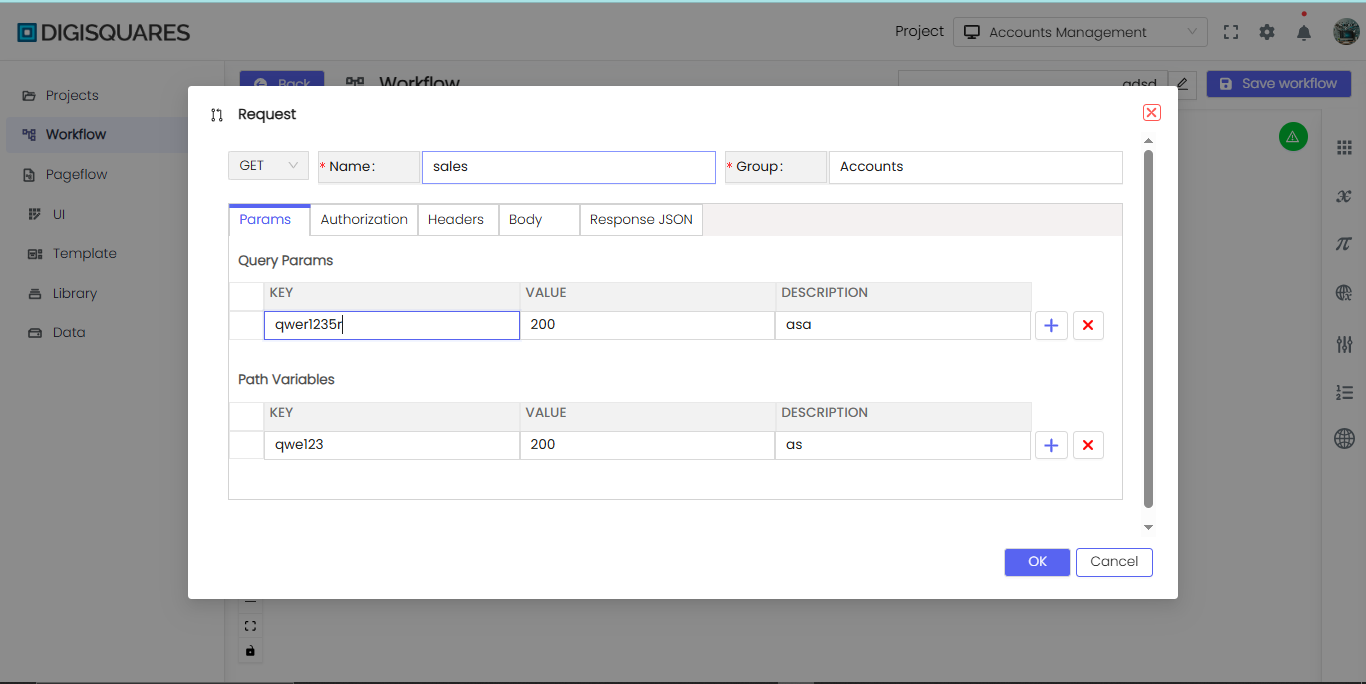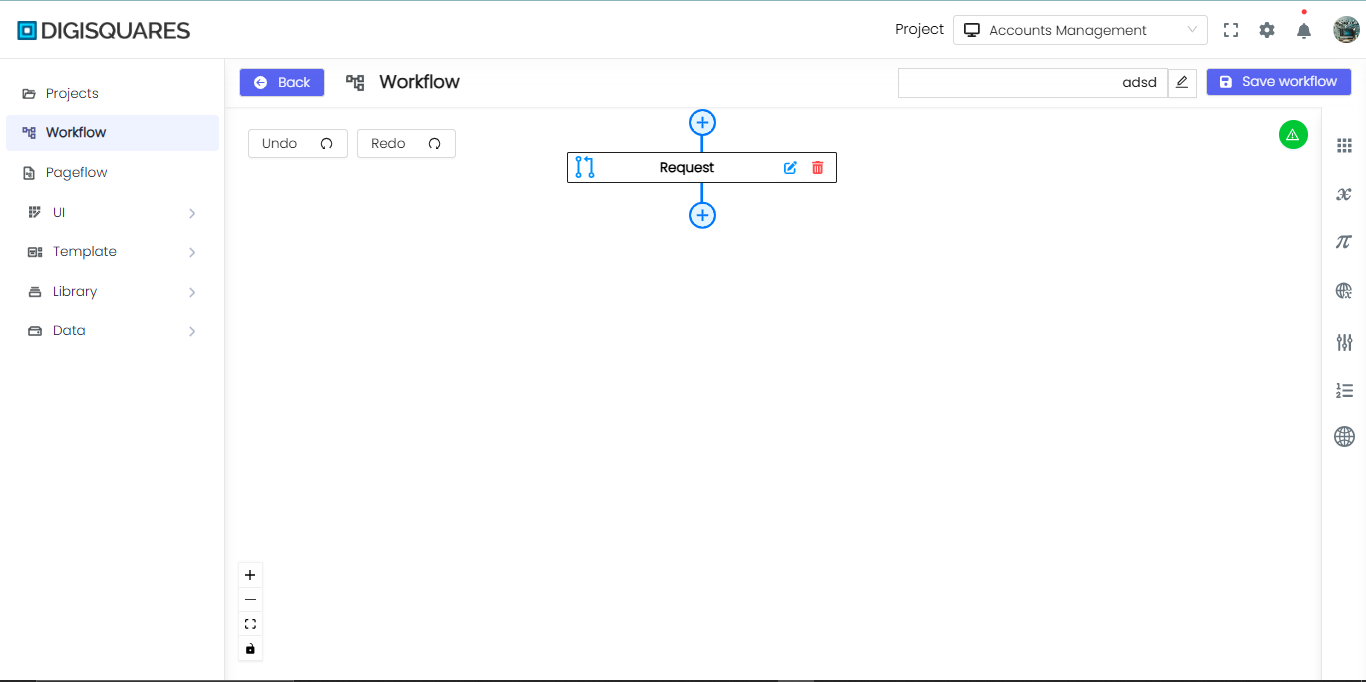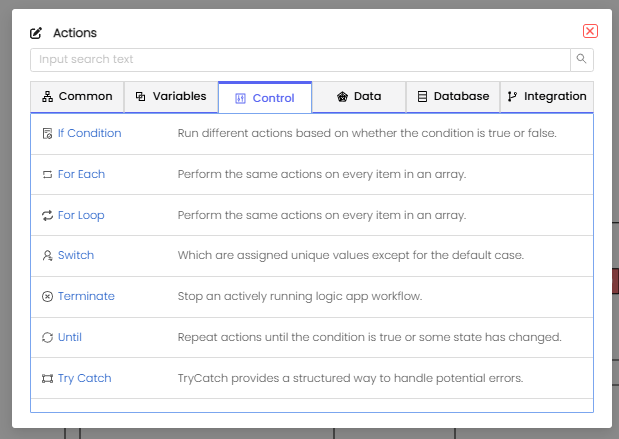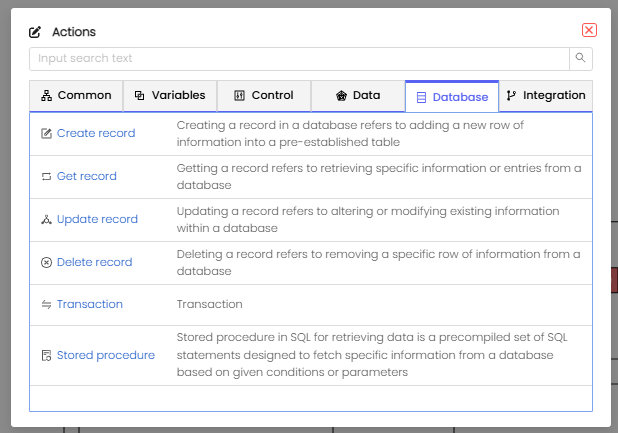Workflow Actions
In DigiSquares Workflows, actions define the tasks to be executed during the workflow process. These actions can be as simple as setting a variable, running a function, or performing complex database operations. The platform provides a variety of pre-built actions categorized under Common, Variables, Control, Data, Database, and Integration.
Example Chart Visualizations
Here are some example visualizations created using Digisquares:
Common Actions
The Common Actions section contains actions that are frequently used across workflows, such as integrating custom functions and calling HTTP endpoints.
Actions Available:
- Functions: Run inline JavaScript/TypeScript code snippets within your workflow.
- HTTP: Call an HTTP or HTTPS endpoint using either the HTTP trigger or action.
- SQL Query: Connect to your SQL Server or run stored procedures or queries.
- Visual Query: Allows non-technical users to create queries and retrieve data easily.
- Web Services: Interact with other applications using protocols like SOAP for data exchange.
- Create Storage: Manage temporary storage in session cookies for user-specific data.
- E-mail: Integrate an email API to send messages from within your workflow.

Variables Actions
Variables are used to store and manipulate data within your workflow. This section provides actions to create, modify, and manage variables.
Actions Available:
- Create Variable: Declare a new variable and set its data type and initial value.
- Set Variable: Assign a different value to an existing variable.
- Decrement: Decrease a variable by a constant value.
- Increment: Increase a variable by a constant value.
- Set Status: Set the response status code.
- Set Response: Define the response that the workflow will return.
- Create Modal: Create a modal to display data and actions.
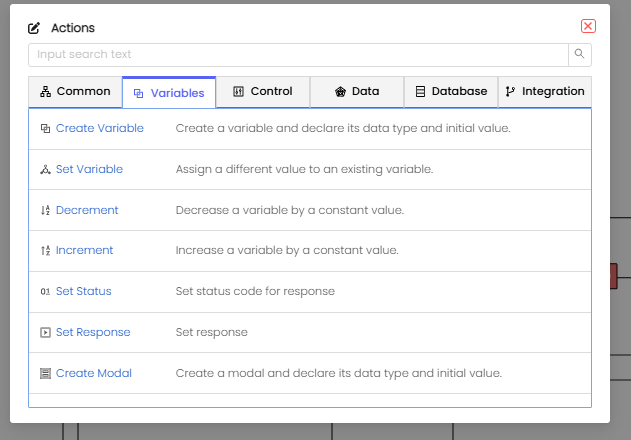
Control Actions
Control actions provide logic to manipulate the flow of your workflow based on conditions and loops.
Actions Available:
- If Condition: Perform actions based on whether a condition is true or false.
- For Each: Iterate through each item in an array and perform the same action.
- For Loop: Run the same actions for each item in an array or a defined range.
- Switch: Perform actions based on different cases, each assigned to a unique value.
- Terminate: Stop an actively running logic app workflow.
- Until: Repeat actions until a condition is met.
- Try Catch: Handle potential errors gracefully with structured error handling.
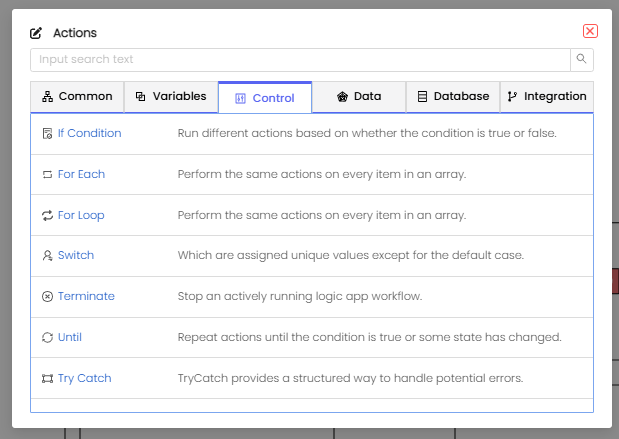
Data Actions
Data actions are used to manage and manipulate data within workflows. These actions enable transformations, parsing, and extraction of data.
Actions Available:
- Filter Array: Create an array with items that meet a specific condition.
- Join: Combine array items into a string, separated by a specific delimiter.
- Parse JSON: Parse JSON data into a more user-friendly format.
- Select: Create a new array by transforming the values or properties of existing data.
- CSV Table: Convert an array of JSON objects into a comma-separated values table.
- HTML Table: Generate an HTML table from an array of JSON objects.

Database Actions
This category provides actions to interact with databases, such as creating, retrieving, updating, and deleting records.
Actions Available:
- Create Record: Add a new row of data into a pre-established table in a database.
- Get Record: Retrieve a specific record or entry from a database.
- Update Record: Modify an existing record within a database.
- Delete Record: Remove a specific record from a database.
- Transaction: Manage database transactions to ensure data integrity.
- Stored Procedure: Execute a predefined set of SQL queries from the database.

Conclusion
By using these actions within the DigiSquares workflow, users can create powerful and dynamic workflows. Whether you're managing data, controlling the flow, or integrating with external services, these actions are the building blocks for automating and optimizing business processes without the need for complex coding.
These pre-built actions are designed to be easy to implement while providing the flexibility to cater to various business requirements, from simple data manipulations to complex integrations with APIs and databases.
This documentation provides an overview of the available actions and their uses, enabling you to configure your workflows efficiently and effectively.
